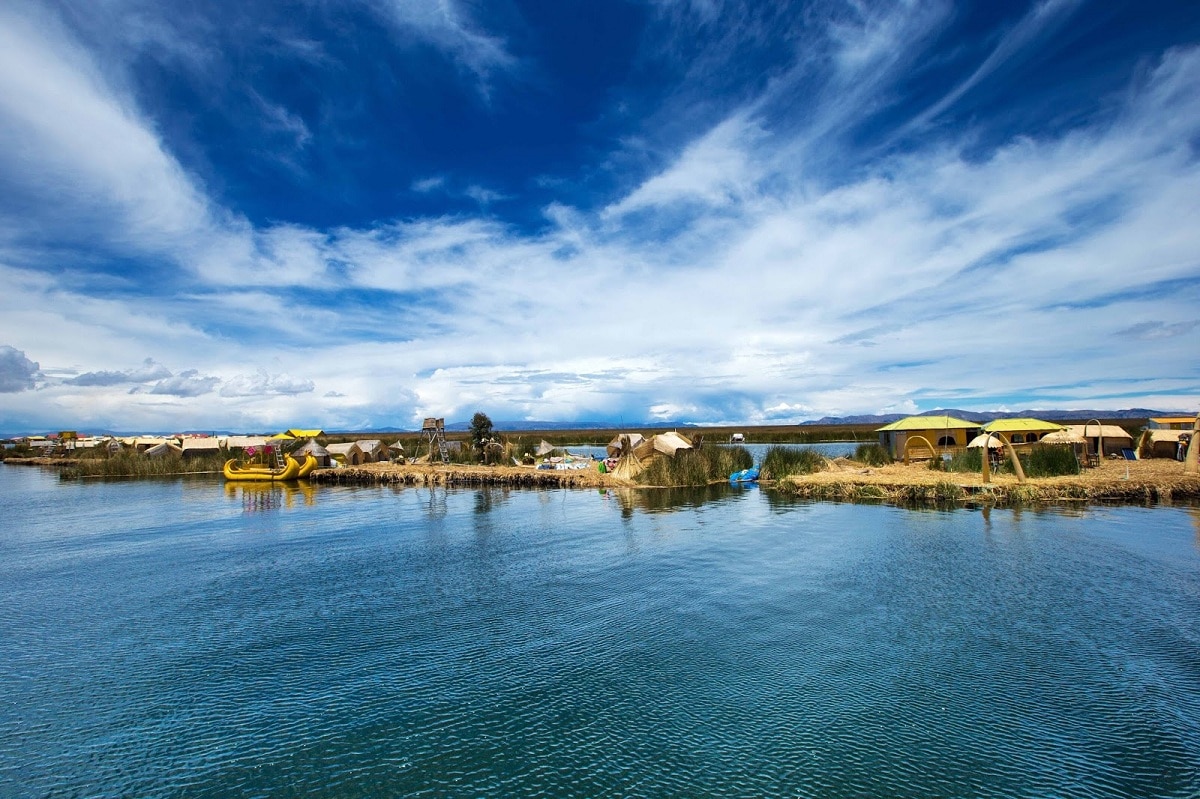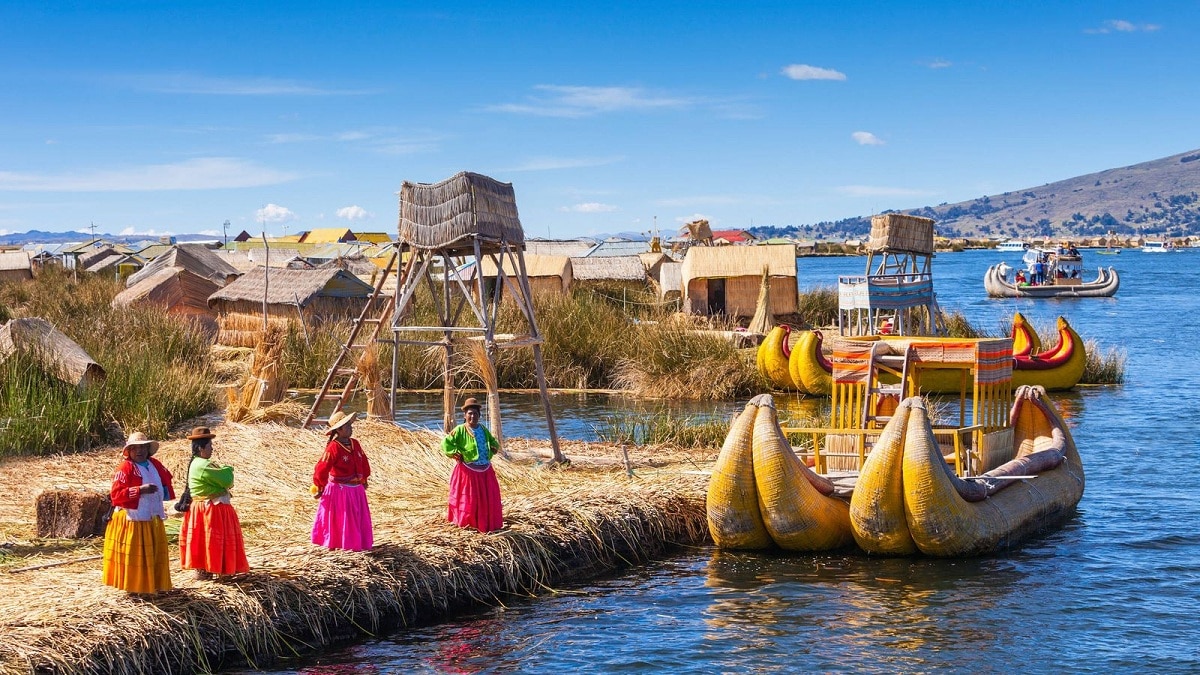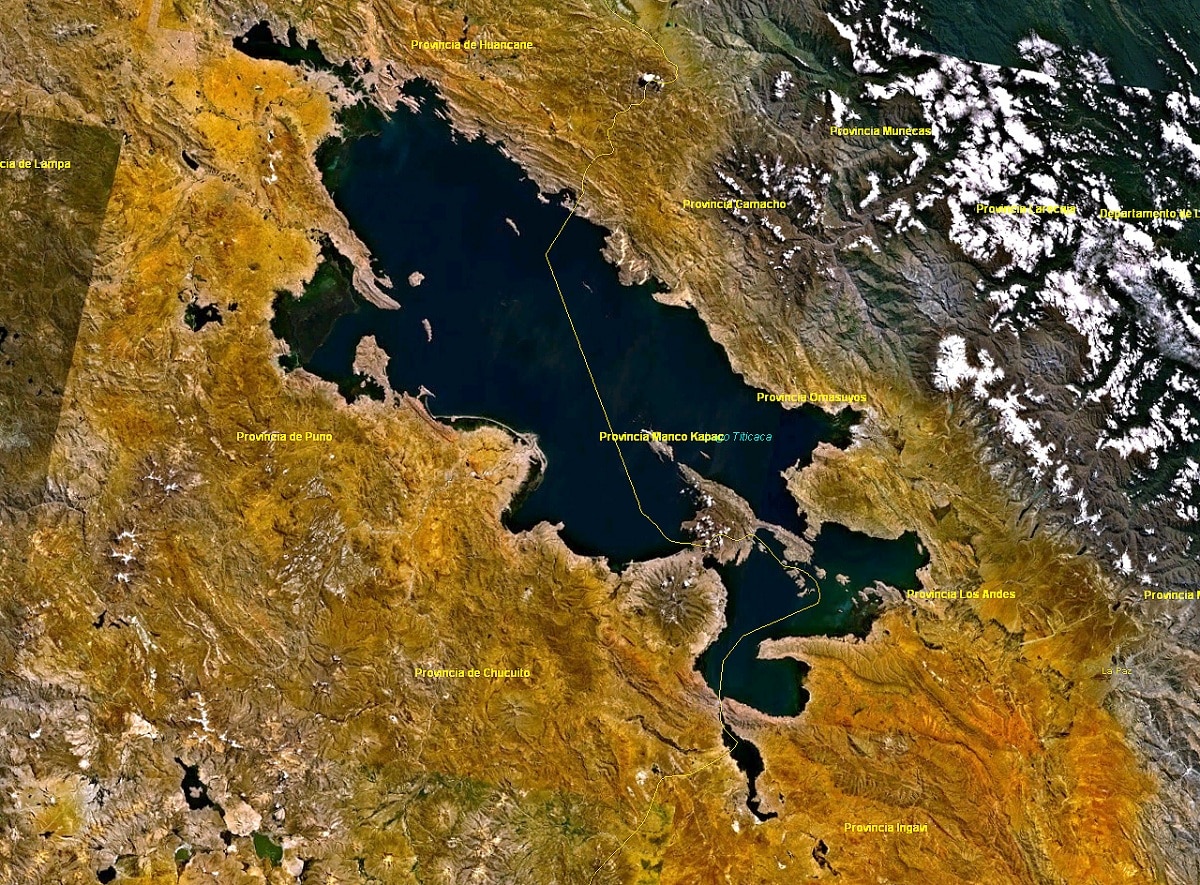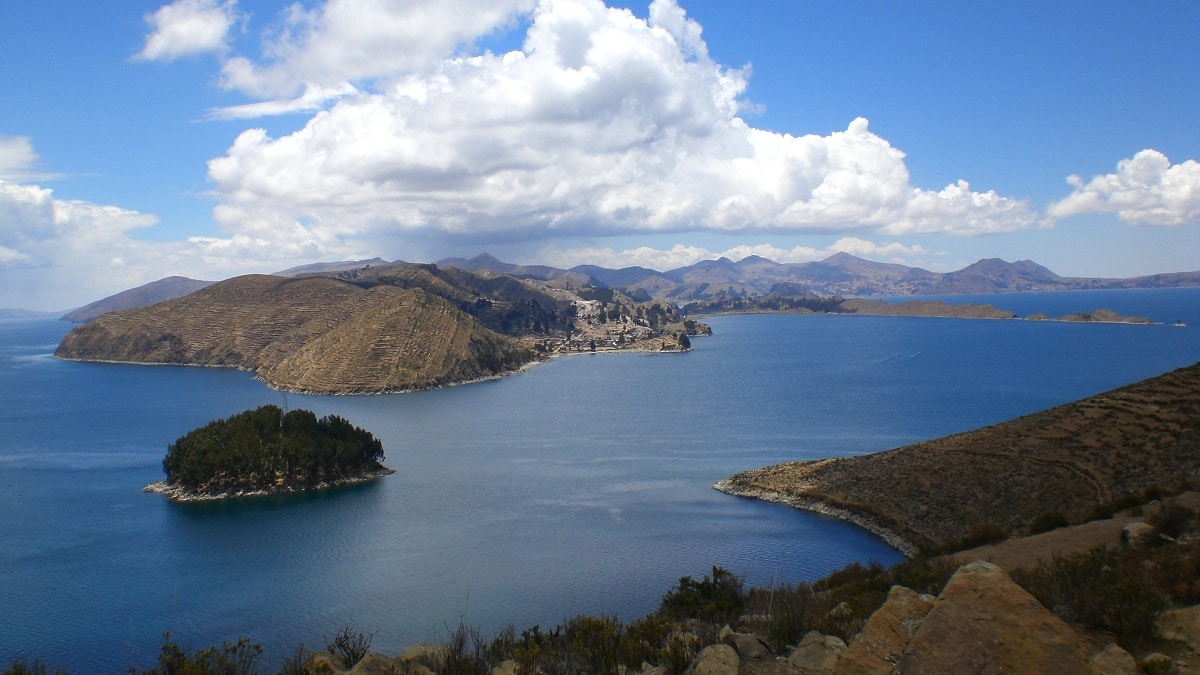
El Titicaca lake it has a large body of water that covers the territory of Peru and Bolivia, it is also listed as the highest lake in the world, it has navigable waters, suitable for fishing, and it has some floating islands built on its surface, where there are a community complete. It is also known as Sea of the Andes.
In this article we are going to tell you everything you need to know about Lake Titicaca, its origin and its characteristics.
Key features

Lake Titicaca is one of the most impressive lakes in the world and is located at an altitude of 3.812 meters. Due to the particularity of its geographical location, it has the particularity that the two Central American countries share, for which it has 56% of Peruvian nationality and 44% of Bolivian nationality.
But its qualities do not end there, because when we compare its extension of 8.560 square kilometers with other lakes in the Latin American region, Lake Titicaca is the second largest lake in this vast territory. Its dimensions cover 204 kilometers from side to side, and a strip of 1.125 kilometers of coastline borders its surface, which also makes it the highest and most navigable lake in the world.
In addition, this beautiful lake has more than 42 islands inside, the most famous of which is the Isla del Sol, which is more relevant than others because the Inca Empire originated there, so it exhibits a series of relics that they are part of this ancient civilization evidence of existence. Nowadays, its population is mostly indigenous, and although they have some influence of modern customs, retain most of their traditions of Inca descent.
Origin of Lake Titicaca

Tectonic forces are caused by the Earth's magma, and this geothermal energy is converted into mechanical energy that causes convective motion of the underground plates that make up our continents. The origin of Lake Titicaca is due to these tectonic forces that cause the eastern and western mountain ranges of the Central American Andes to rise. The force of this movement produces the formation of plateaus, which are flat high reliefs. This plateau is known by the name of Meseta de Collao.
The Collao Plateau, located at more than 3.000 meters of altitude, kept the water frozen during the Ice Age, so deposition processes did not occur. This allowed it to retain its shape and depth, so when the interglacial period occurred, the ice thawed and became Lake Titicaca, now known as Lake Titicaca.
The semi-arid and arid climates of the intra-caudal basins of Peru and Bolivia also affect their minimal and slow drainage, contributing to the persistence of this vast body of water.
Extensive studies of the plateau lake system have shown that Lake Titicaca is the result of the evolution of a very ancient system that began in the Early Pleistocene epoch, 25,58 to 781,000 years ago, and transitioned towards the end of the Pliocene. .
The climatic changes that occurred during these periods, ranging from relatively hot climates to cold and wet climates, directly affected the existence and size of Lake Titicaca and other plateau lakes. In the same phenomenon, the foothills of the Cordillera are fractured by north-south tectonic forces. Finally, in the Lower Pleistocene 2,9 million years ago, After the origin of Lake Cabana and before the existence of Lake Baliwan, a tectonic trench was formed that would be occupied by the majestic Lake Titicaca.
Climate of Lake Titicaca

The climate of Lake Titicaca depends on its altitude, being a lake of more than 3.000 meters above sea level, with a large difference in temperature between day and night. Temperatures can reach up to 25°C during the day and 0°C at night.
The mean annual temperature of the lake has been determined to be 13°C. For its part, the surface temperature of the water varies between 11 and 25 degrees Celsius in August and between 14 and 35 degrees Celsius in March.
It may be a bit strange that being at that height the temperature during the day is so warm, and this is because Lake Titicaca can regulate the temperature because it absorbs solar energy during the day, which is in the area around the lake. At night this energy is radiated away, so the temperature is not as cold as we expected.
Hydrology
Most of the water in Lake Titicaca is lost by evaporation, a phenomenon that is more severe in some areas where salt flats are formed, because the minerals of the lake are incorporated through the rivers and are deposited.
It is estimated that only 5% of the lake's water is discharged into the river Desaguadero during the high water season, which flows into Lake Poopó, which is saltier than Lake Titicaca. The water that drains from Lake Titicaca actually ends up in the Salar de Coipasa, where the small amount of water quickly evaporates.
Another characteristic of its hydrology is that the rivers that make up its hydrological basin are very short, with the Ramis, Asangaro and Calabaya rivers being identified as the main and longest, of which the Ramis is the longest at 283 km.
The flow of the tributaries is low and irregular and their contribution is determined by the seasonal rains, which are located between the months of December and March, while the drought or absence of rains is located between the months of June and November.
The tributaries of Lake Titicaca are characterized by a very slight slope, which is why their behavior is meandering, that is, sinuous, which means that there are no turbulences, this influences transparency, the type of fauna and flora associated with the system. .
The water of Lake Titicaca is characterized by being brackish water and there are no procedures to determine, control and monitor the quality of the water. In fact, the sampling that has been carried out is specific, that is, much of the lake's surface has not been studied in this regard. However, the waters that currently belong to the Bay of Puno are known to be polluted as the city's wastewater is discharged into them without any treatment.
I hope that with this information you can learn more about Lake Titicaca and its characteristics.